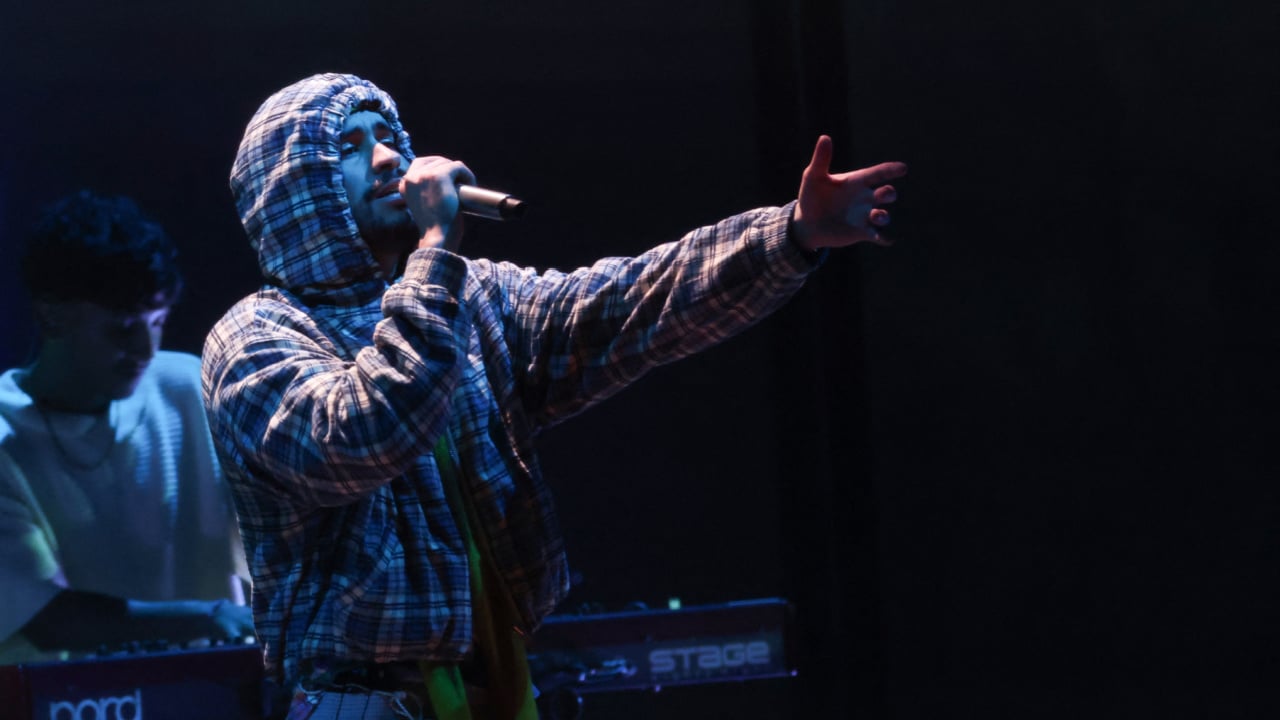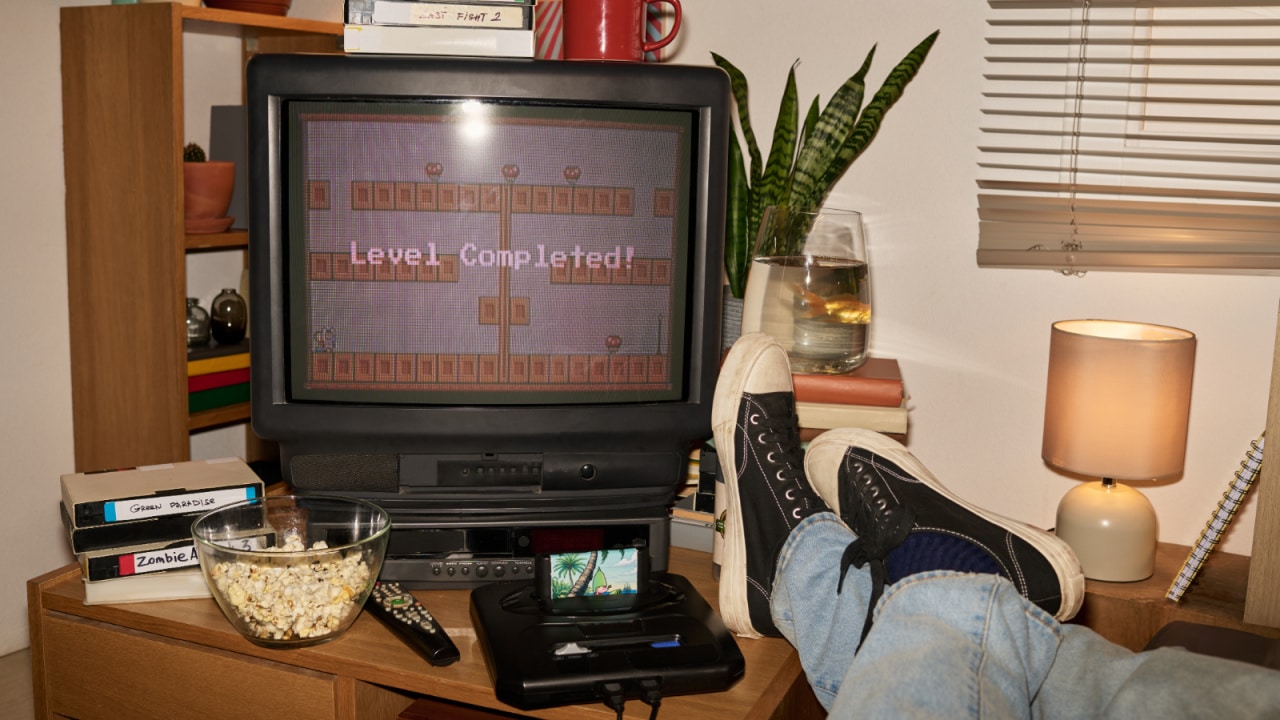Camila Ramón, Peloton’s First Spanish-Speaking Cycling Instructor, Inspires Latinas To Silence Their Inner Tía Tóxica
If Camila Mariana Ramón isn’t on your radar yet, she probably will be soon: the Argentinian-born, Miami-raised Peloton instructor is gaining major traction for her body-positive, sweat-inducing, fun classes she teaches in both Spanish and English.
Carrying her culture with her everywhere she goes, the cycling instructor even brings old school perreo (hello, “Machucando” by Daddy Yankee) and Brazilian music to her rides — so, what’s not to love?!
Ramón emigrated from Argentina to the U.S. as a 7-year-old. Describing her immigration story as being “a very sad kid” who “really wanted to go back to Argentina,” Ramón even went back to her home country for her quinceañera. Growing up running and dancing, the fitness guru put her passion aside for a few years for a job in international public relations, but soon realized a desk job was not for her.
Making her transition into working in fitness, she began teaching cycling classes when her husband’s military career sent them off to L.A. Deciding to eventually do her own training programs, she realized there was “a big gap in the market where nobody [was] really talking about training to develop a positive relationship with themselves.” And that’s where the magic started.
The exercise guru is also a trailblazer for self-love, body acceptance, and putting fitness first — not thinness. It’s no wonder Ramón’s followers love her so much: she regularly posts about how to “heal your relationship with exercise,” giving tips like seeing “training as a gift and act of self care rather than a punishment” and thanking your body for giving you the privilege of movement. Ramón is a breath of fresh air in an era that consistently seems to prize appearances over what’s on the inside.
The instructor is pioneering bilingual classes just as much as she is bringing much-needed amor propio in the exercise world — but her journey was a long and winding one. mitú spoke with Ramón about her story, her experience as an immigrant, and the best ways to heal your relationship with yourself from the inside-out.
1. How did you become a Peloton instructor?
I had decided that I wanted to build an app, and then the pandemic happened. I was doing everything: Instagram Lives, in-person park workouts, I was continuing to build my platform, and I was really building [a] community. And during that time I realized I wanted to do something low-impact for myself… and that’s when I got a Peloton bike.
I started riding the Peloton, and [I thought] “this is incredible.” I had always known [about] Peloton and I had always admired all of the instructors and the brand itself, and I feel like I really aligned with what they were doing… especially when it came to the communication of fitness for health, not for changing yourself.
I got the Peloton, and [thought], “I need to do something about this.” I launched my app in Spanish in October 2020, and my husband and I decided to get out of the military during the pandemic, [and] we moved back to Miami in [February 2021]. [About Peloton] I said, “I have to find out if this is something that can happen… I need to reach out one way or another to see if this is going to be the case, because if not, I know that I’ll regret it for the rest of my life.” So I wrote an email to Peloton, and they wrote back to me, and here we are.
2. Can you tell us about your own self-love journey? And how would you recommend confronting difficult comments made about your body by family?
When I made my transition into fitness, I realized as I started working out after three years of working in an office, and not having worked out regularly, that my relationship with exercise really hadn’t been the best. So I was trying to get back to my weight before I started my office job, or I was trying to look a certain way, and that just led me to [become] extremely frustrated.
I realized that something that I had loved for so long; I was starting to hate. I hated working out. [I thought] “this can’t be it, I have to fix this.” So I started focusing on performance-based goals, just moving and having fun. And once I healed my relationship with training, I was able to heal my relationship with myself and with my body. In terms of my own body, I’m really glad that I feel the way that I feel now because I did struggle for a long time with my body, and with the way that I looked. And now, being so confident, being unstoppable, feeling so athletic, it’s just changing the narrative for myself.
About family comments, they might not mean them in a harmful way, [but they] really do affect you and your mental health… I’ve had to do that with some of my family members, and a lot of times… we’re scared of their reaction… so I think training yourself beforehand and [asking yourself], ‘it could go this way, am I ready to receive that?’ before having the conversation with somebody [is important]. Most of the time, they probably won’t even notice what they’re doing and they will immediately apologize. I think it’s something that is generational, too, that has been trained into people’s minds.
3. What are some of your biggest tips for changing negative narratives we may have about ourselves and our bodies?
A lot of times, the opinions that we have about ourselves and our body isn’t necessarily of our whole. Sometimes we choose to pick ourselves apart and look at different parts of our body wishing they were different. Something that I say a lot in class is, “your body is a whole.” You can’t have the experiences that you’re having with yourself and your body in your training without those parts that you have an opinion about.
You have to learn to be grateful for every aspect of yourself, and every aspect of your body, and celebrate yourself unapologetically. Just approaching things with gratitude helped me so much on my journey. I [also] think it’s important to… not fault yourself for the conversations that you’ve had with yourself in the past… Recognizing that we train our bodies every day, but the mental aspect should be a daily training practice, too. It’s normal for you to have those highs and those lows when it comes to your self-acceptance and your body positivity journey.
For me, what helped the most was healing my relationship with my body [through] movement, because movement has so many other beneficial aspects that go way beyond the aesthetic. Movement helps with your mood, your self-esteem… step one for me was just move and have fun.
4. Okay, we need to know — where did the “Tía Tóxica” idea come from? It is the most relatable catchphrase we’ve ever heard in a fitness class.
[La Tía Tóxica] is a figurative character that represents that doubtful aspect inside each one of us. That kind of aspect that brings you down… you know when you show up to your fiesta latina and your tía tóxica is like, ‘y el novio?’ when she’s been single for 75 years.
So I [tell] people, don’t be your own tía tóxica. Don’t speak to yourself negatively, don’t start to incorporate those expectations of yourself that you don’t need to incorporate in your life. It’s a joke, but it’s real. I feel like every Latino has a tía tóxica.
5. You’re also in the public eye — how do you navigate that, particularly negative social media comments?
I’ve definitely gotten negative comments when it comes to my body, people telling me, “why are you giving fitness advice if you aren’t fit?” or what they consider to be fit enough. Or people giving me a little bit of hate because I speak Spanish. And that just drives me closer to my purpose and my why. So remembering your purpose and your why… for me, our 6.6 million members are what drives me.
I don’t get a lot of negative messages but every now and then you do get one through, but out of the thousands of messages that I receive every day, it’s people telling me they’re in Kentucky and they haven’t been able to go back to Puerto Rico, or Mexico, in years and they feel connected to their home via their bike and the platform. That’s my “why.” My “why” is not the person that’s sending me the negative message, forget them. My “why” is the Mila Mafia, the PeLatinos, our Peloton community, the people that are connected, feel identified, feel represented, and feel celebrated within my classes.
Those [negative] messages serve as motivation and fuel to keep going, because clearly that just means that there’s more work to do. Don’t get me wrong, sometimes I’ll sit on it for longer than I need to… and then I’ll be like, “okay, let’s go back to work.”
6. You’re all about self love, and using fitness for joy instead of as a mechanism within “diet culture.” What kind of message do you hope to send to your students in your classes?
I feel as a Latina growing up, I didn’t really see images of regular bodies in the media when it came to trainers and things like that. And I’m excited that I get to be here and I get to change that conversation. I’ve had so many women [saying] “I train with you because you look like me and that empowers me to be healthy, and that I don’t have to change myself or I don’t have to work out to want to change myself all the time. I can just work out to feel good.”
If a little girl can potentially see me on their screen and think, “Wow she looks healthy, she looks athletic, but she looks like a regular human being” and aspire [them] to not want to change themselves all the time, then that’s a mission that I feel I’ve accomplished.
I’m really excited to be in the position that I am right now, and I never thought that it would be possible… I’m really proud to be an immigrant, and I truly believe that if you stay humble, keep pushing, focus, then you’ll reach your goals. I invite you to take my class on Peloton, it’s always a party, it’s hard A.F., but we have some old school reggaeton classes, we have a lot of dembow, we have our fiesta latina rides, today I’m doing a Latin breakups pop ride, then we’re doing a 45-minute “canciones para limpiar la casa” class, so it’s really fun, it’s an amazing celebration.
I hope my story inspires other immigrants, other Latinos, and other people to stop doubting themselves, because I feel like the best of us happens when we let go.



